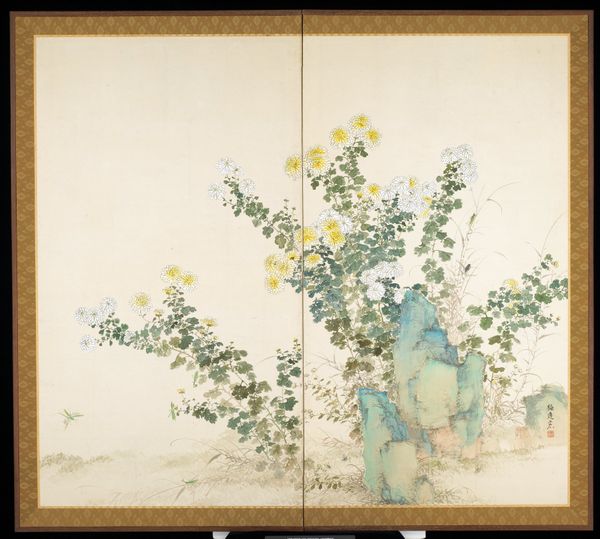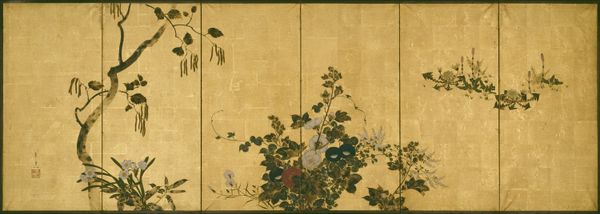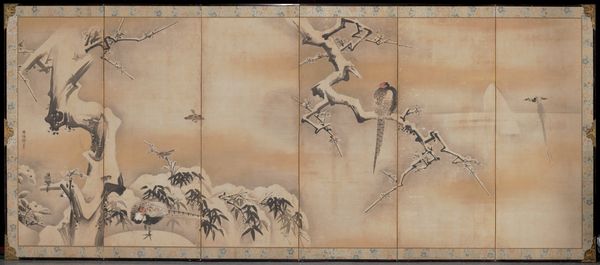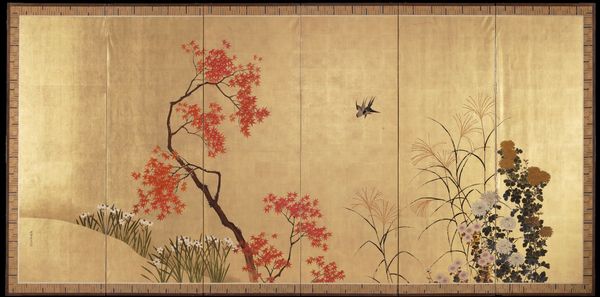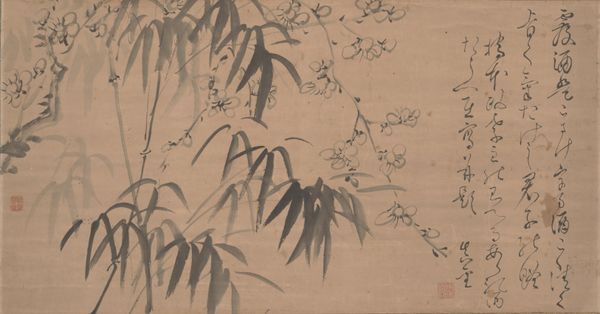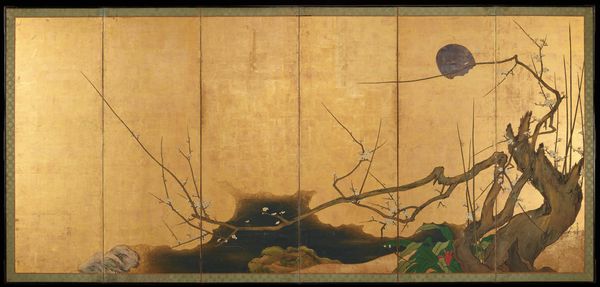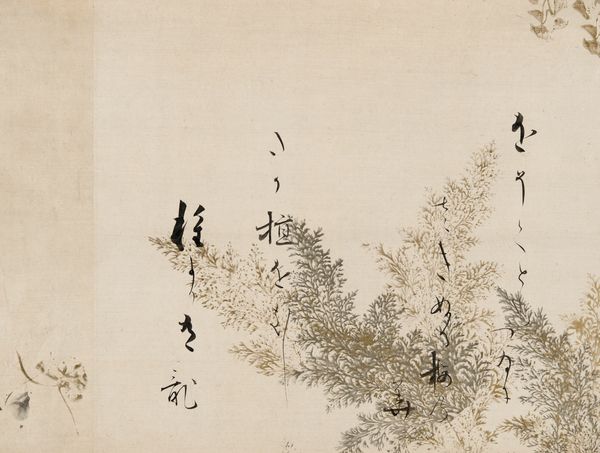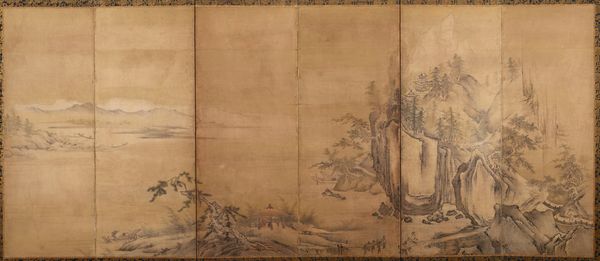![Willow [left of a pair of Cherry and Willow] by Hasegawa School](/_next/image?url=https%3A%2F%2Fd2w8kbdekdi1gv.cloudfront.net%2FeyJidWNrZXQiOiAiYXJ0ZXJhLWltYWdlcy1idWNrZXQiLCAia2V5IjogImFydHdvcmtzLzhmZjVjNTJjLWViZDUtNGIxMy1hOTEyLWY2YmQxMmFjNWFmYy84ZmY1YzUyYy1lYmQ1LTRiMTMtYTkxMi1mNmJkMTJhYzVhZmNfZnVsbC5qcGciLCAiZWRpdHMiOiB7InJlc2l6ZSI6IHsid2lkdGgiOiAxOTIwLCAiaGVpZ2h0IjogMTkyMCwgImZpdCI6ICJpbnNpZGUifX19&w=3840&q=75)
Willow [left of a pair of Cherry and Willow] c. 17th century
0:00
0:00
painting, watercolor
#
water colours
#
painting
#
asian-art
#
landscape
#
japan
#
form
#
watercolor
#
line
#
watercolor
#
yamato-e
Dimensions: 63 15/16 × 141 7/8 in. (162.4 × 360.36 cm) (image)70 × 148 1/4 × 3/4 in. (177.8 × 376.56 × 1.91 cm) (outer frame)
Copyright: Public Domain
Curator: At first glance, I find myself drawn to the almost meditative quality of this work. The gold leaf shimmers, providing such a gentle contrast to the cool, elegant greens. Editor: Let’s dive into this a little deeper. What we're seeing here is a section of a six-panel screen attributed to the Hasegawa School, dating back to the 17th century. It's aptly titled "Willow [left of a pair of Cherry and Willow]", and can be admired right here at the Minneapolis Institute of Art. Curator: Attributed, you say? Does the lack of a clear attribution have historical implications regarding workshop practice? Was this a collaborative piece perhaps reflecting an established workshop aesthetic? Editor: Precisely. Screens like these were often produced in workshops. And while it is easy to reduce such artistic modes to capitalist and productive strategies, in early modern Japan screen painting also stood for collaboration across a wide network of painters often bound together by artistic and aesthetic principles. This piece could serve as a great example of this phenomenon, because its emphasis is certainly less about painterly individualism, and more about group collaboration. But look at how the composition plays out across the panels, directing the eye to drift across. Curator: The soft rendering in watercolor against the gleaming gold certainly invokes a sense of preciousness but not pretension. What is striking to me, however, is how this kind of serene beauty would have functioned within the space it once occupied. Editor: It would certainly set a tone. The willow motif, suggestive of flexibility and resilience, could be used to create contemplative spaces, promoting introspection among its owners and the elite society this artist supplied. Curator: And if the paired Cherry and Willow is brought together, then the full significance is presented to those inside this screen. They now reflect on seasonal and personal change, an aide to elevate one to a tranquil inner world. Editor: Looking closer at the brushwork reveals an undeniable control that accentuates a sense of delicate movement, wouldn't you agree? The screen does appear to encourage a certain perspective, prompting contemplation while existing within a society undergoing major transformation. Curator: I'm drawn to how this artwork is, then, so deeply embedded within its time. Its gentle lines of nature speak both to form, function and societal trends. Editor: Absolutely. I think what this analysis highlights is that even the most apparently tranquil images are never divorced from the complexities and flux of culture.
Comments
minneapolisinstituteofart almost 2 years ago
⋮
The overhanging limbs of a willow with recently sprouted leaves, branches of a cherry tree in full bloom, and the top of a clump of flowering grasses are the only painted motifs in this pair of folding screens. There is much more to be uncovered, however, when we look closely. An invisible breeze moves in from the left, causing the willow branches to reach slightly to the right. The grasses and cherry branches in the right screen, too, are in movement, seemingly lifted up by a wind from below. The missing tree trunks and the hidden base of the clump of grass suggest that we, the viewers, see all of this from some high point, looking down through the branches toward the expanse of gold foil, interrupted only by ambiguous gold forms—created by building up shell-white pigment (gofun) on the paper surface and then covering it in gold—that also appear to move across the surface, as if driven by the wind. Are they clouds' Mist' Or do they represent the shimmering, rippling surface of some body of water far below'
Join the conversation
Join millions of artists and users on Artera today and experience the ultimate creative platform.



